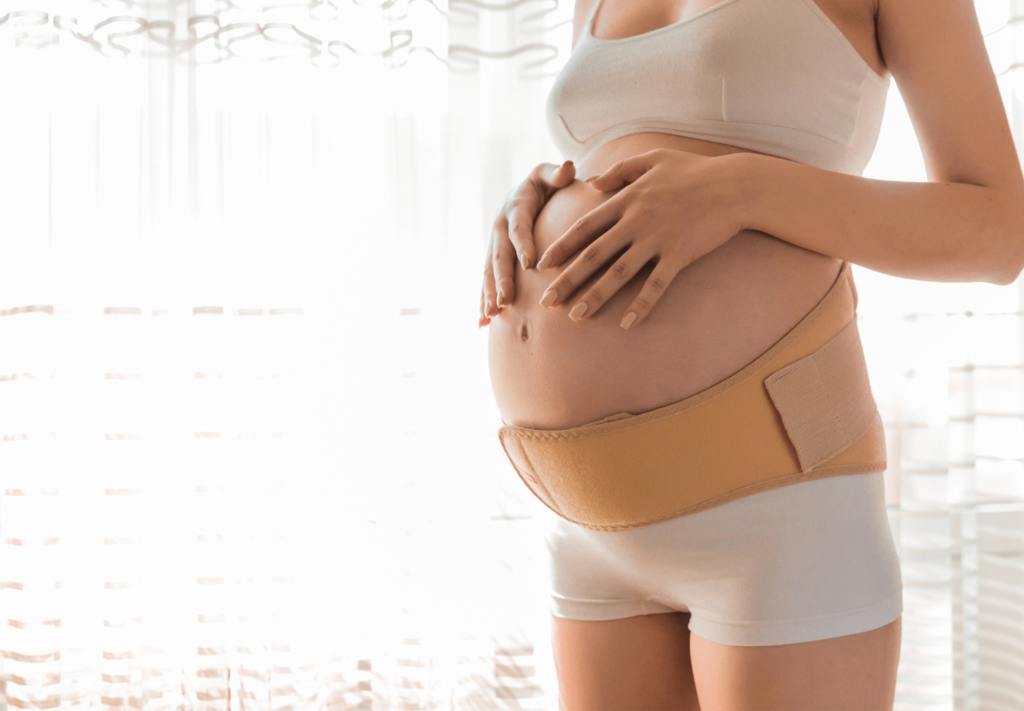



Pregnancy can cause a great deal of stress on your lower back. More than 50% of women experience lower back during pregnancy, especially during the second and third trimesters. Many of these women experience sciatica pain, ranging from mild to chronic. Should you wear a spinal brace to reduce back pain?
A spinal brace or pregnancy back brace provides optimal support to your back as the belly size increases during the pregnancy. For those experiencing sciatica pain, a back brace for sciatica can relieve pressure from the pinched nerve, reinforce the body’s core muscles, help women stay active, and perform their daily activities easily during pregnancy.
In this blog, we will discuss why women should consider wearing a spinal brace during their pregnancy.
Back Pain During Pregnancy
Backache during pregnancy may be caused due to various body changes and a number of other factors such as changes in hormones, loosening of ligaments, and an increase in weight that may strain your joints and the arch in your lower back. The growing size of the baby may put pressure on the sciatica nerve leading to sciatica pain in pregnant women.
The pain may travel to your lower lumbar area, thighs, and buttock. It can manifest itself in many ways such as you might experience pain in a pulled muscle or an ache in the entire body.
Spinal Brace For Pregnancy
A spinal brace for pregnancy is designed by medical professionals for pregnant women who want to stay active, supported, and comforted during pregnancy. Made of breathable fabric and built for a discreet fit, the spinal back brace for pregnancies redistributes the weight of babies, reduces pressure off the lower back, and provides incredible relief and comfort. A spinal brace for pregnancy is recommended to use from 3 to 9 months during pregnancy. Check out Daphco’s range of back braces to find the right brace for yourself.
Reasons You Should Wear A Spinal Brace During Pregnancy
Here are some ways spinal braces can reduce your back pain and ease your pregnancy journey.
1. Decreases Back Pain
A woman might experience lower back pain due to various reasons. The two most common types of pain are:
Sacroiliac (SI) Joint Pain
SI joint pain occurs during pregnancy as a result of the increased production of a hormone called ‘Relaxin.’ The hormone loosens the ligaments and causes the hip joint to become less stable, leading to sharp and excruciating pain in the lower back region adjacent to the tailbone. A spinal brace for pregnancy is designed to support and stabilize the SI joint so a woman can perform daily activities without pain.
Round Ligament Pain
The round ligament pain is characterized by a dull ache to sharp pain in the lower back and hip area, especially during the second trimester.
The increased weight puts pressure on the ligament which supports the uterus. Though it’s temporary and doesn’t last long, it may turn into an unbearable problem in some cases. A spinal brace for pregnancy redistributes the weight of the fetus across the back and abdomen which reduces the pressure on the round ligament, providing quick relief from back pain.
2. Provide Gentle Compression To The Back
A pregnancy back brace provides gentle compression and reduces discomfort due to physical activity. However, too much compression on the abdomen can affect your blood pressure, leading to indigestion, heartburn, etc. Therefore, it’s recommended to consult your doctor or a specialist and follow their guidelines to maintain a gentle compression.
3. Prevent ‘Swayback’ Posture
One of the biggest challenges that women face during pregnancy is the ‘swayback’ posture.
As the baby grows and the bumps grow larger, the spine might drag forward due to growing weight. It is called the ‘swayback’ posture that may trigger pain in the lower back region. It occurs due to extra weight carried in front of the body and the weakening of the core muscles that support and stabilize the spine.
A spinal brace provides external cues to your back to help you maintain a proper posture. It encourages a correct posture by providing support to the lower back and torso and preventing overextension of the lower back.
Are Back Braces Safe During Pregnancy
Many pregnant women have this concern about whether wearing a pregnancy back brace is safe for the growing child. The good news is that the pregnancy is safe to use and it helps the baby settle into optimal birth position. However, make sure it’s not too tight so that it may affect your blood circulation or cause inflammation.
Please note: If you’re unsure about using a spinal brace during pregnancy or don’t know how to use it, consult your doctor or a specialist first. Wearing a pregnancy back brace wrong can do harm so it’s recommended to consult your doctor before purchasing one.
Other Methods To Treat Back Pain During Pregnancy
1. Good Sleep Support
Most pregnant women face difficulty sleeping, especially during the later months of pregnancy. Lack of good sleep support may cause back pain because most women tend to sleep on one side. To avoid back pain, make sure you sleep on one side and use good sleep support such as a cushion between your knees. Never sleep on your back or stomach as it can do harm to your back.
2. Do Prenatal Yoga
Prenatal yoga can be an effective treatment for pregnant women suffering from back pain, muscle soreness, and joint pain. Prenatal yoga relieves the stress on joints and helps women relax their back muscles and sleep better during the night.
3. Wear Supportive Shoes
Wearing heels or uncomfortable shoes during pregnancy can increase the curvature of the back and drive the weight of your bump into the lower spine region. On the other hand, wearing uncomfortable flat shoes will cause pain in your feet which may lead to an imbalance and pain up to your leg and lower back region. Therefore, it’s recommended to wear low-heeled shoes that have an orthotic insert or arch support that will give you more stability while walking.
Are you experiencing lower back pain due to pregnancy, sciatica pain, herniated disc, or any other medical condition? Get a Medicare back brace for herniated disc, sciatica pain during pregnancy, bulging disc, or any other condition from Daphco.
Contact us to learn more about our range of back braces.
Tags: back braceBack painback pain during pregnancyback pain treatmentpregnancy back brace,
Search Articles
Latest Articles
28th Feb, 24
23rd Feb, 24
20th Feb, 24
15th Feb, 24
13th Feb, 24



 888-616-4156
888-616-4156 



 28th Feb, 24
28th Feb, 24 


